Later Christian tradition put Jesus’ last meal with his disciples on Thursday evening and his crucifixion on Friday. We now know that is one day off. Jesus’ last meal was Wednesday night, and he was crucified on Thursday, the 14th of the Hebrew month Nisan. The Passover meal itself was eaten Thursday night, at sundown, as the 15th of Nisan began. Jesus never ate that Passover meal. He had died at 3pm on Thursday afternoon.
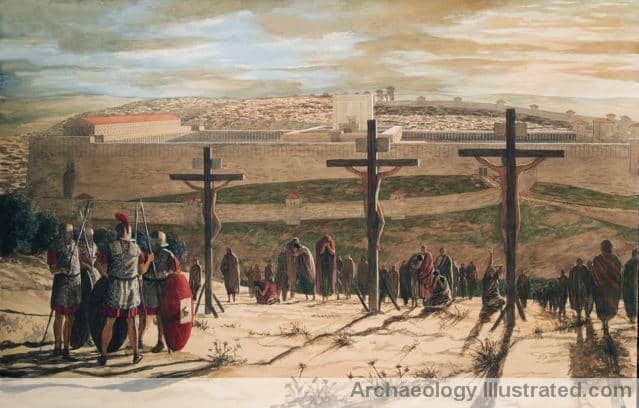
The reason it matters is that getting the chronology straight that weekend enables us to understand the early tradition that Jesus was in the tomb “three days and three nights,” as well as the chronology of the “Last Supper” and the Passover and how the Sabbaths and festival days correlate together that year. This alternative chronology makes all our pieces fit from our various sources, including the Synoptic Gospels, John, and the Gospel of Peter.
The confusion arose because all the gospels say that there was a rush to get his body off the cross and buried before sundown because the “Sabbath” was near. Everyone assumed the reference to “the Sabbath” had to be Saturday—so the crucifixion must have been on a Friday. However, as Jews know, the day of Passover itself is also a “Sabbath” or rest day—no matter what weekday it falls on. In the year 30 AD Friday, the 15th of the Jewish month Nisan was also a Sabbath—so two Sabbaths occurred back to back—Friday and Saturday. Matthew seems to know this as he says that the women who visited Jesus’ tomb came early Sunday morning “after the Sabbaths” (Matthew 28:1). [1]This breakdown of the last week of Jesus’ life is based on astronomical calendar calculations not the modern Jewish calendar programs which is a “calculated” calendar not … Continue reading

As is often the case, the gospel of John preserves a more accurate chronology of what went on. John specifies that the Wednesday night “last supper” was “before the festival of Passover.” He also notes that when Jesus’ accusers delivered him to be crucified on Thursday morning they would not enter Pilate’s courtyard because they would be defiled and would not be able to eat the Passover that evening (John 18:28). John knows that the Jews would be eating their tradition Seder meal Thursday evening.
Reading Mark, Matthew, and Luke one can get the impression that the “last supper” was the Passover meal. Some have even argued that Jesus might have eaten the Passover meal a day early—knowing ahead of time that he would be dead. But the fact is, Jesus ate no Passover meal in 30 AD. When the Passover meal began at sundown on Thursday Jesus was dead. He had been hastily put in a tomb until after the festival when proper and full Jewish burial rites could be carried out.
There are some hints outside of John’s gospel that such was the case. In Luke for example, Jesus tells his followers at that last meal: “I earnestly wanted to eat this Passover with you before I suffer but I won’t eat it until it is fulfilled in the kingdom of God” (Luke 22:14). A later copyist of the manuscript inserted the word “again” to make it say “I won’t eat it again,” since the tradition had developed that Jesus did observe Passover that night and changed its observance to the Christian Eucharist or Mass. Another indication that this is not a Passover meal is that all of our records report that Jesus shared “a loaf of bread” with his disciples, using the Greek word (artos) that refers to an ordinary loaf—not to the unleavened flat bread or matzos that Jews eat with their Passover meals. Also, when Paul refers to the “last supper” significantly he does not say “on the night of Passover,” but rather “on the night Jesus was betrayed,” and he also mentions the “loaf of bread” (1 Corinthians 11:23). If this meal had been the Passover Paul would have surely wanted to say that but he does not. We also have a similar tradition in the Talmud which tells us, “They hung Yeshua the Nazarene on Erev Pesach”–which means on the “eve of Passover” (b. Sanhedrin 67a and 43a)
As late as Wednesday morning Jesus had still intended to eat the Passover on Thursday night. When he sent his two disciples into the city he instructed them to begin to make the preparations. His enemies had determined not to try to arrest him during the feast “lest there be a riot of the people” (Mark 14:2). That meant he was likely “safe” for the next week, since the “feast” included the seven days of Unleavened Bread that followed the Passover meal. Passover is the most family oriented festival in Jewish tradition. As head of his household Jesus would have gathered with his mother, his sisters, the women that had come with him from Galilee, perhaps some of his close supporters in Jerusalem, and his Council of Twelve. It is inconceivable that a Jewish head of a household would eat the Passover segregated from his family with twelve male disciples. This was no Passover meal. Something had gone terribly wrong so that all his Passover plans were changed.
Jesus had planned a meal Wednesday evening alone with his Council of Twelve in the upper room of the guest house on Mt Zion. The events of the past few days had brought things to a crisis and he knew the confrontation with the authorities was unavoidable. In the coming days he expected to be arrested, delivered to the Romans, and possibly crucified. He had intentionally chosen the time and the place—Passover in Jerusalem—to confront the powers that be. There was much of a private nature to discuss with those upon whom he most depended in the critical days ahead. He firmly believed that if he and his followers offered themselves up, placing their fate in God’s hands, that the Kingdom of God would manifest itself. He had intentionally fulfilled two of Zechariah’s prophecies—riding into the city as King on the foal, and symbolically removing the “traders” from the “house of God.”
At some point that day Jesus had learned that Judas Iscariot, one of his trusted Council of Twelve, had struck a deal with his enemies to have him arrested whenever there was an opportunity to get him alone, away from the crowds. How Jesus knew of the plot we are not told but during the meal he said openly “One of you who is eating with me will betray me” (Mark 14:18). His life seemed to be unfolding according to some scriptural plan. Had not David written in the Psalms, “Even my bosom friend, in whom I trusted, who ate of my bread, has lifted the heel against me” (Psalm 41:9). History has a strange way of repeating itself. Over a hundred years earlier, the Teacher of Righteousness who lead the Dead Sea Scroll community, had quoted that very Psalm when one of his inner “Council” had betrayed him.
When Judas realized the plan for the evening included a retreat for prayer in the Garden of Gethsemane after the meal, he abruptly left the group. This secluded spot, at the foot of the Mount of Olives, just across the Kidron Valley from the Old City, offered just the setting he had promised to deliver. Some have tried to interpret Judas’s motives in a positive light. Perhaps he quite sincerely wanted Jesus to declare himself King and take power, thinking the threat of an arrest might force his hand. We simply don’t know what might have been in his mind. The gospels are content simply to call him “the Betrayer” and his name is seldom mentioned without this description.
When Jesus was arrested his disciples “all forsook him and fled,” though a group of loyal women from Galilee, among them Mary Magdalene and his mother, apparently followed from afar. He was taken first to Annas, who sent him for a mock “trial” at the house of Caiaphas who was his son-in-law and titular High Priest. After being condemned for blasphemy he was taken to Pontius Pilate, the governor of Judea, who sent him to Herod Antipas who was in town for the Passover festival. Herod sent him back to Pilate and in the wee hours of Thursday morning Jesus was flogged and condemned to be crucified for sedition along with two others.
Jesus and the other two victims were put on their crosses by 9am Thursday. I have argued that the place of crucifixion was none other than the western slope of the Mt. of Olives directly before the Eastern or “Golden” Gate, see “Locating Golgotha.” Whether Jesus expected God would rescue him before things went that far is impossible to say. If he had identified himself with the Davidic figure who was to be “pierced” in Zechariah 12 it is entirely possible that he thought he was destined to be nailed to the cross—but then saved from death itself before it was too late.
What Jesus likely expected was a sudden, dramatic, and overwhelming manifestation of the Kingdom of God—perhaps a great earthquake that would destroy the Herodian Temple, with the sun darkened, the moon turning blood red, the dead being raised, and the appearance of legions of heavenly armies in the sky. During the previous week he had told his disciples who had been admiring the beauty of the massive stones of Herod’s Temple complex that the day would come when not one stone would be left on another (Mark 13:2). At his trial one of the charges had been, “We heard him say, ‘I will destroy this temple that is made with hands, and in three days I will build another made without hands’” (Mark 14:58). As Jesus had told his disciples the night before at their last meal, “Now is the judgment of the world, now the ruler of the world will be driven out” (John 12:31). The Hebrew prophets had written vividly about the “Day of Yahweh,” when people would cast their gold and silver into the streets and hide in the caverns of the rocks from the “terror of Yahweh and the glory of his majesty when he rises to terrify the earth” (Isaiah 1:21). The kings of the earth were to be toppled and Satan himself be shut up in a pit (Isaiah 24:21). For Jesus the prophetic “third day” had arrived and the coming of “the Son of Man in the clouds of heaven” was imminent.
The gospels report that the chief priests and others who had supported them taunted the victims, aiming particular scorn at Jesus: “Let the King of Israel come down from the cross that we may believe!” Standing at a distance was Jesus’ mother, Mary, as well as Mary Magdalene and the other women who had followed him from Galilee on this last journey to Jerusalem. According to the gospel of John the “disciple whom Jesus loved” was also present with Jesus’ mother. Late in the day, when Jesus began to think he might die after all, he officially put his mother in the care of this disciple whom I have identified as his brother James—now to be the “eldest” of the family.
According to Mark Jesus was on the cross from the third to the ninth hour, which is 9am until 3pm (Mark 15:25, 33). Toward the end he began to sensed his life slipping away. He cried out with a loud voice in his native Aramaic tongue: Eloi, Eloi, Lama sabachthani? Those are the opening words of Psalm 22—My God, My God, why have you forsaken me? At that point he bowed his head and breathed his last. Other than the words of the Psalm he quoted we will never know what his last thoughts were. It might well be that as he grew weaker he was reciting that very Psalm. It is the prayer of a dying man, attributed to King David, who in the end is saved from terrible suffering and death. In fact, this is the Psalm that specifically refers to “piercing of the hands and feet” (verse 16). The Psalm ends with the hopeful declaration: “God did not hide his face from me but heard when I cried to him.” Up until the last minutes perhaps Jesus believed that God would intervene, save his life, and openly manifest his Kingdom.
Since the Jewish Passover meal or Seder was to be eaten just after sundown that evening, the high priests had asked the Romans to break the legs of the victims to hasten death. The gospel of John remarks, “They did not want the bodies to remain on the cross during the Sabbath, especially since that Sabbath was a high day” (John 19:31). When they came to Jesus he appeared to be completely lifeless. One of the soldiers thrust a spear into Jesus’ side just to be sure. He did not flinch. The King was dead.

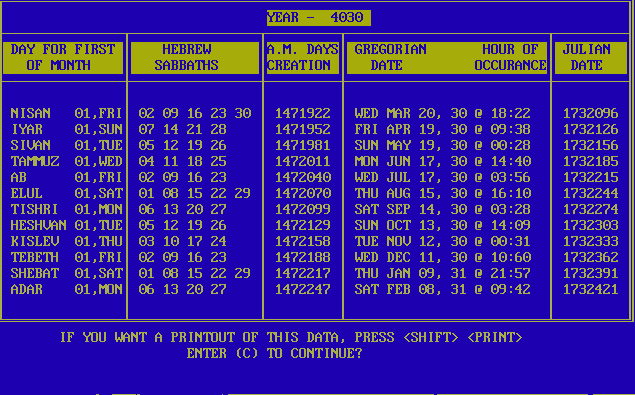 https://jamestabor.com/wp-content/uploads/2016/03/New-Moon-30-CE-300x187.png 300w" sizes="(max-width: 635px) 100vw, 635px" />
https://jamestabor.com/wp-content/uploads/2016/03/New-Moon-30-CE-300x187.png 300w" sizes="(max-width: 635px) 100vw, 635px" /> 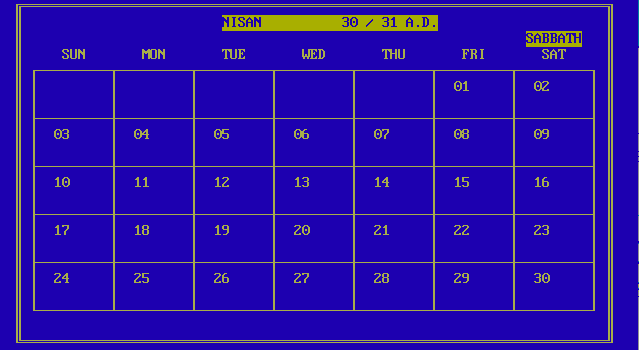 https://jamestabor.com/wp-content/uploads/2016/03/Nisan-30-CE-300x164.png 300w" sizes="(max-width: 639px) 100vw, 639px" />
https://jamestabor.com/wp-content/uploads/2016/03/Nisan-30-CE-300x164.png 300w" sizes="(max-width: 639px) 100vw, 639px" />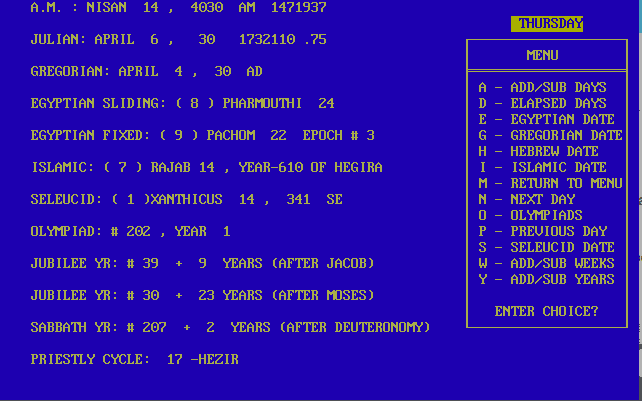 https://jamestabor.com/wp-content/uploads/2016/03/Crucifixion-of-Jesus-in-30-CE-Nisan-14-Thursday-300x187.png 300w" sizes="auto, (max-width: 642px) 100vw, 642px" />
https://jamestabor.com/wp-content/uploads/2016/03/Crucifixion-of-Jesus-in-30-CE-Nisan-14-Thursday-300x187.png 300w" sizes="auto, (max-width: 642px) 100vw, 642px" />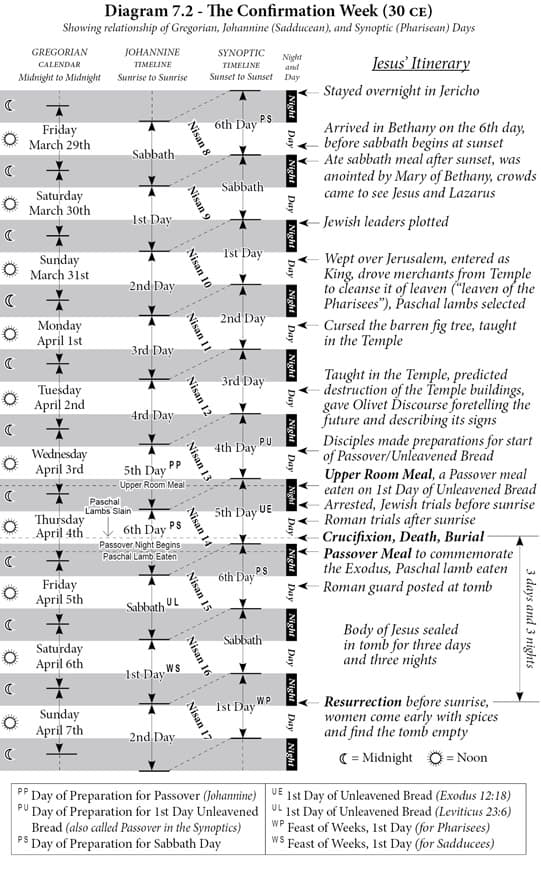 https://jamestabor.com/wp-content/uploads/2016/03/Nisan-30-CE-186x300.jpg 186w" sizes="auto, (max-width: 541px) 100vw, 541px" />
https://jamestabor.com/wp-content/uploads/2016/03/Nisan-30-CE-186x300.jpg 186w" sizes="auto, (max-width: 541px) 100vw, 541px" />

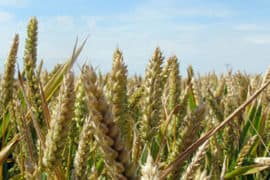



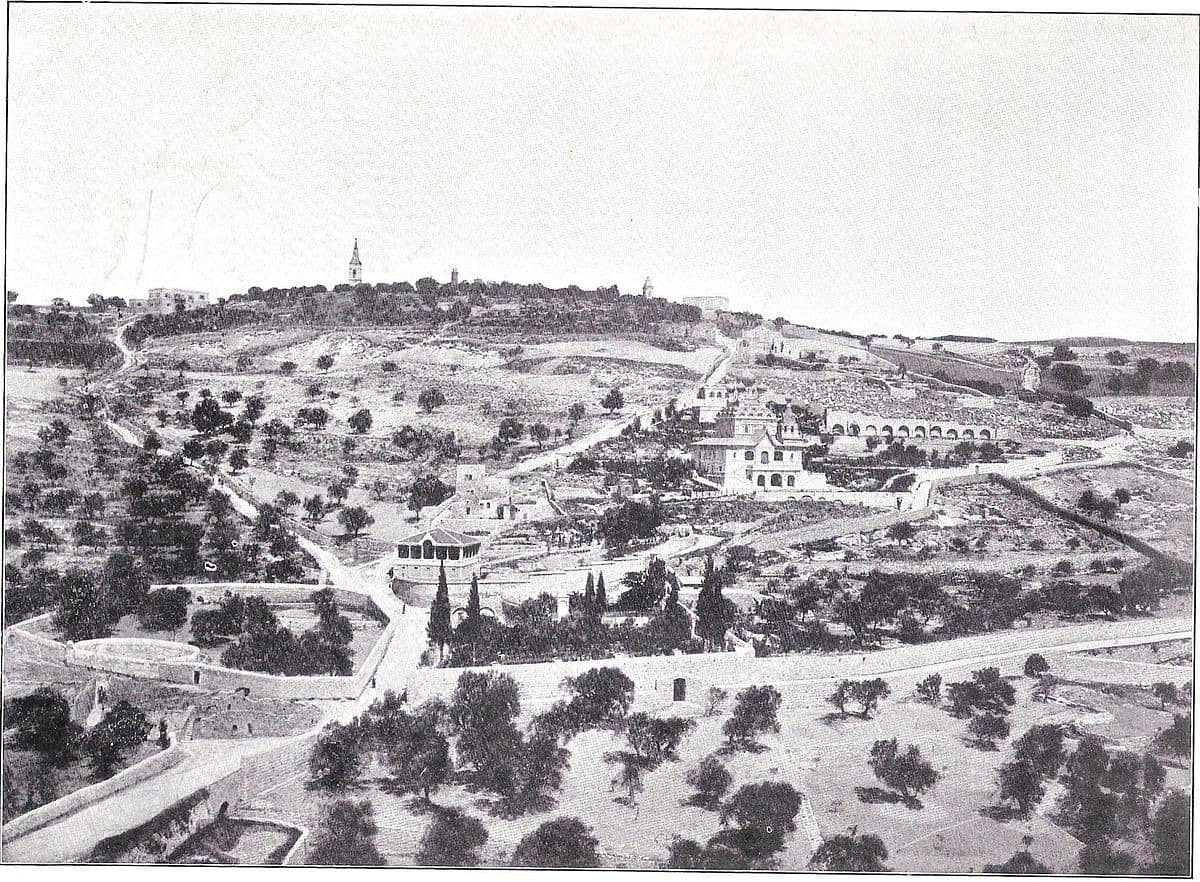
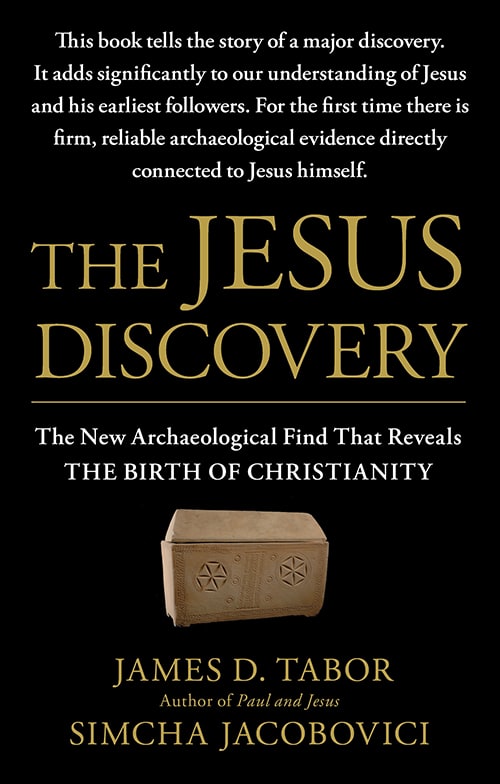
Comments are closed.